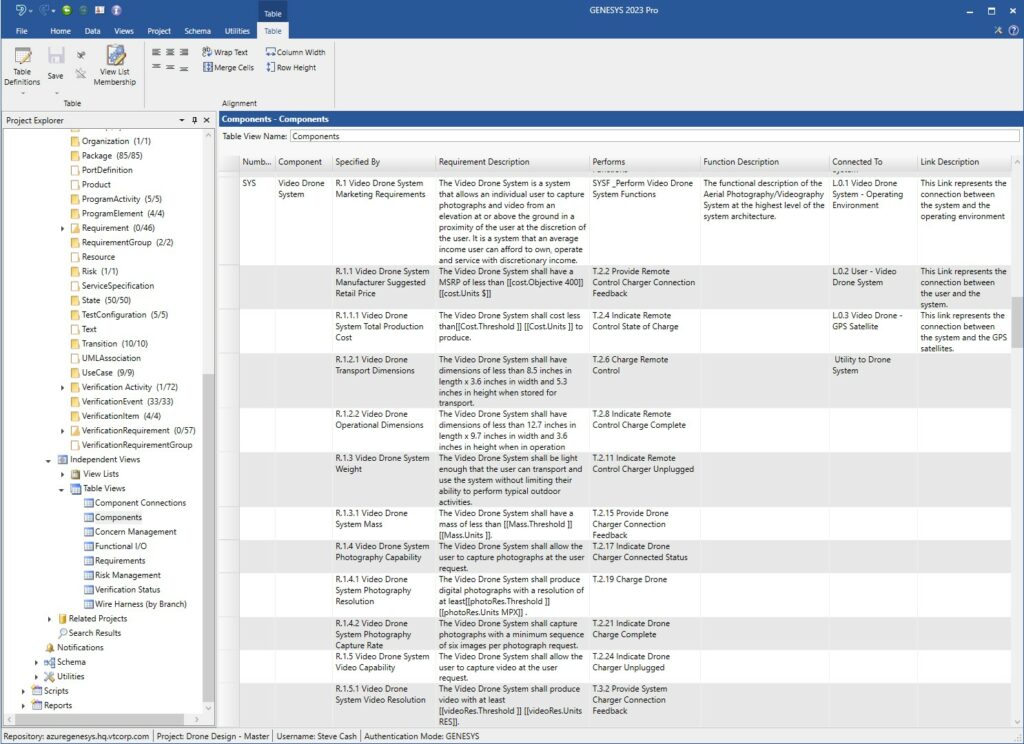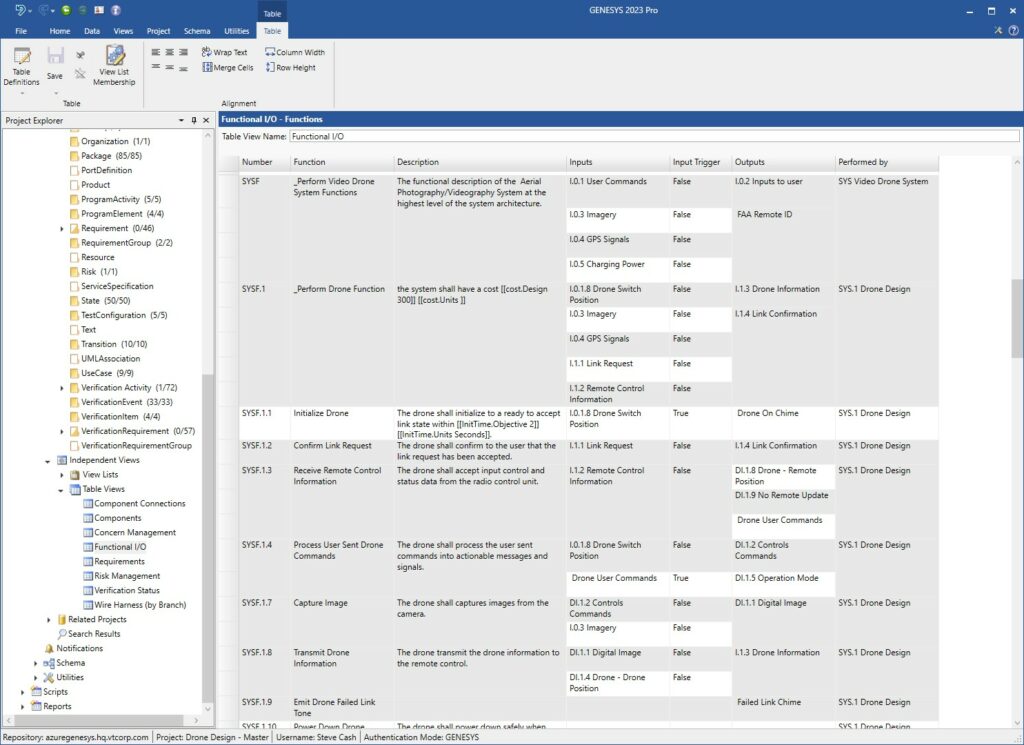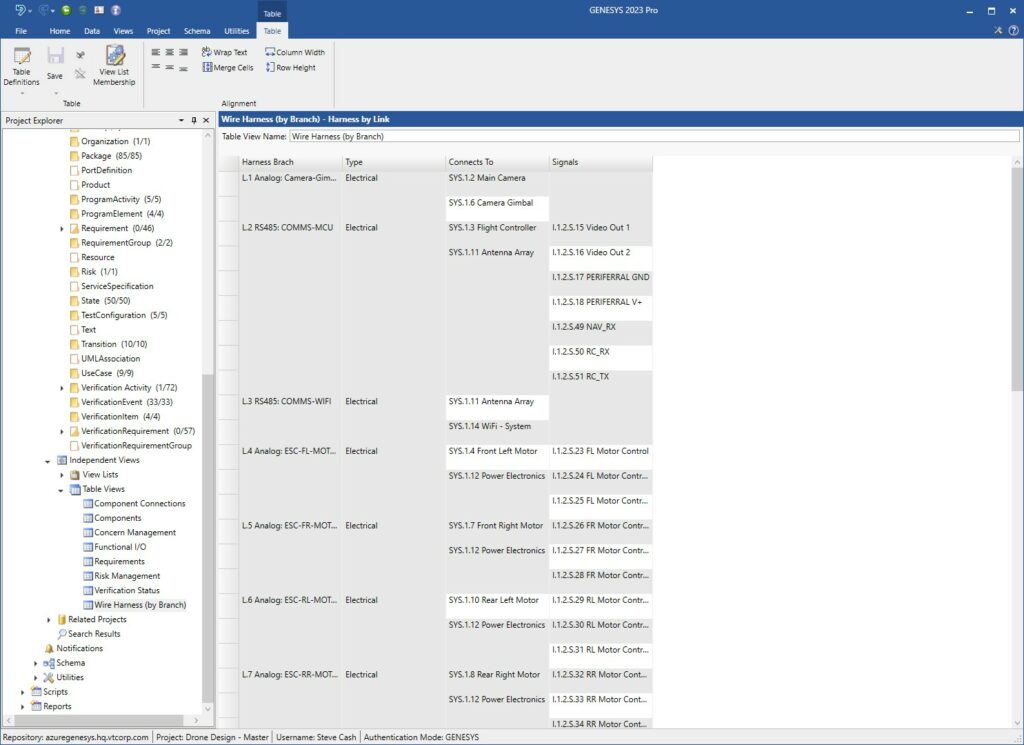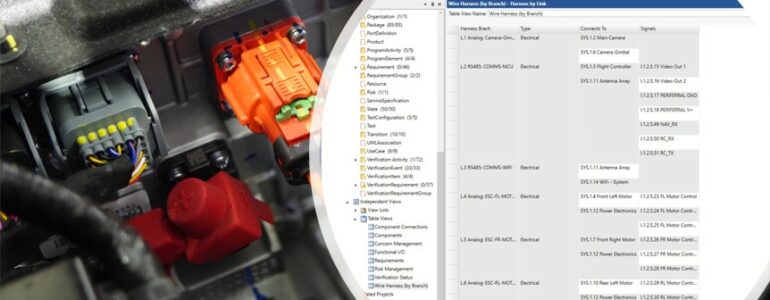Part II: System Architecture Activities
This is Part II in a series of three posts about Table Views in GENESYS. In Part I, our guide reviews what a metachain is and the nature of metachain queries, how requirements traceability tables can be an invaluable aid to a systems engineering practice, and the importance of verification status tables.
Introduction
In this post, I go over the application of tables in reviewing the development of a systems architecture from the perspectives of traceability from concept to requirements, functional specification, and detailed design architecture. I continue to use the concept of metachain queries explained in the first blog to describe the creation of tables.
Components Traceability Table
A components traceability table can be used to examine the completeness of a component specification. A specification may be missing information such as the requirements that drive the overall design of the component, a definition of the functions that the component must perform, or an understanding of how the component connects to other components in the system. Missing information could lead to an incomplete or incorrect implementation. We can create a table that displays this information so that we can review it for completeness.
The metachain starts with the components. The attributes of component number and description are displayed for component identification. Extensions to the metachain were added to identify requirements related by the “specifies” relationship, functions related by the “performs” relationship, and connections (links) related by the “connected to” relationship. For each of the entities on the extensions, the attributes of number, name and description are displayed.
A review of the table below shows that descriptions for many of the functions have not been completed. This may indicate a lack of information about the function and may lead to a misinterpretation of the intended operation of the function.

Component Traceability Table
Functional I/O Table
A functional I/O table can be used to explore the functionality of our system. Information about the functions, their inputs and outputs, and information about the components that perform the functions can aid in understanding what the system does, how it does it, and what in the system performs the specific operation. Missing or incomplete information can lead to incorrect operation.
The metachain starts with the functions. The attributes of function number, name, and description are displayed for function identification. Extensions to the metachain were added to identify inputs (items) related by the “inputs” relationship, outputs (items) related by the “outputs,” and components related by the “allocated to” (performed by) relationship. Connection name and item name attributes are displayed. For the port, attributes of name, direction, and pin-signal assignment are displayed. An additional extension to the metachain allows us to examine the relationship attribute for each input to determine if it is a standard input or an input with control functionality—a trigger.
An exploration of the table below shows that all information needed for a functional specification is available.

Functional I/O Table
Wire Harness Table
A wire harness table can act as the specification for a wire harness designer. The table displays wire harness branches (links), the components to which they connect, and the signals (items) that are transferred in each branch of the harness. Incorrect or incomplete information in the table could lead to an incorrect or incomplete design.
The metachain starts with items of type “electrical.” The attributes of number, name, and type are displayed for branch identification and type confirmation. Extensions to the metachain were added to identify components related by the “connects” relationship and signals related by the “transfers” relationship. Only the attributes of number and name are needed for identification of the links and items.
A review of the table below shows that some links do not have signals. This is an incomplete specification of the wire harness and should be resolved prior to being given to design.

Wire Harness Table
Conclusion
I have given you some examples of how the Table Views capability in GENESYS 2023 can provide a way to organize and explore your project data from a systems architecture development perspective. Creating tables like these with the metachain queries enables you to visualize the information in a way that can help you improve your overall capability in managing and developing your system architecture. Once you start practicing with the Table Views feature, you’ll see how handy and helpful it is. Write me if you have any questions.






